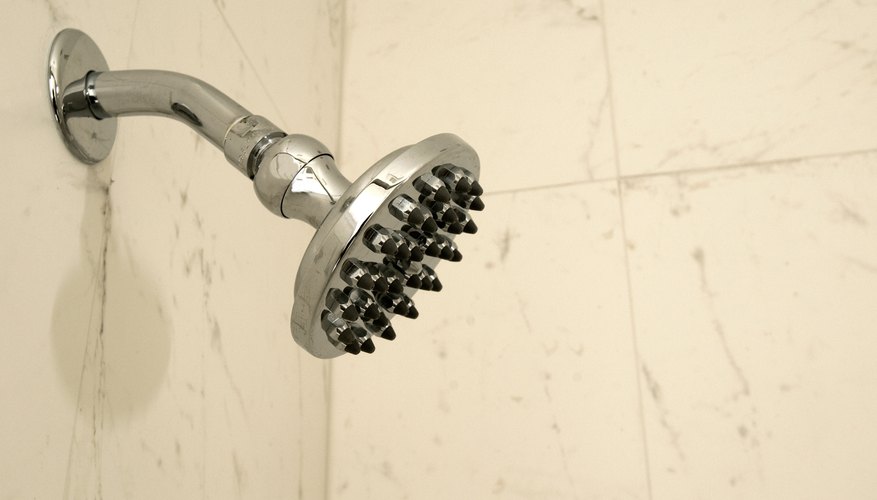When installing your own shower, there are plenty of things to consider. Placement of the valves and tap are important to the comfort and ease of use in any shower, but there's no exact height that's needed for any specific fixture. Variables to consider are the height of the users, placement of the bathroom tiles, what looks good in the room and existing plumbing.
The valves
The standard minimum height for shower valves is 36 inches above the floor of the tub, and the maximum is 48 inches. A valve set within this range is at a convenient height for most adults to use comfortably, and should be about waist-height.
The tap
The shower tap should be set between 72 and 84 inches above the floor. If the occupant's heights are known, a good rule of thumb is that the tap should be at least a few inches above the tallest user's head, but still within reach of the shortest user. The tallest user should be able to rinse his or her hair without ducking, while other users should be able to adjust the tap as needed.
Building codes
Accessibility concerns may change the height of the valves and the tap. Before installing any plumbing, make sure you're complying with local building codes. For commercial or rental properties, there may be federally mandated accessibility requirements. To avoid problems with the property in future, make sure to check requirements for your installation to be up to code.
- Accessibility concerns may change the height of the valves and the tap.
- To avoid problems with the property in future, make sure to check requirements for your installation to be up to code.
Prefabricated kits
When there is a bathtub tap, there may be additional height considerations for installation. If you have purchased a kit with various components included, you should check the instructions that came with your hardware to determine the relative distance between the fixtures in addition to considering ease of use for the property's occupants.
